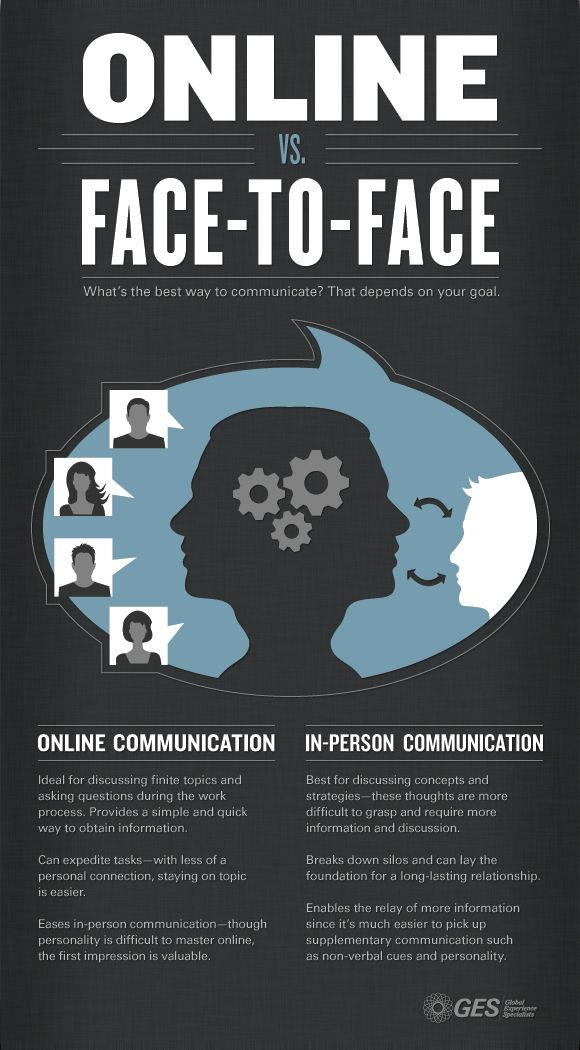Regardless of preference, most of us experience a difference between email conversations and discussions over coffee at a neighborhood cafe. Even the advanced capabilities of online video chat tools, which enable far more than asynchronous text exchange between multiple parties, offer something otherwise than the encounters we have across the local pub table. These differences are signficant and meaningful, but too often the opposition of face-to-face (f2f) vs. online gets superimposed onto hierarchical binaries such as real vs. virtual, unmediated vs. mediated, or simply good vs. bad.
When I encountered the difficult materiality of the face in/of Emmanuel Levinas’s philosophical reflections, I developed an allergy to the phrase ‘face-to-face’ as it is typically used to distinguish between interactions mediated by internet communication technologies (online) and those mediated by the technologies of human sensation (f2f). If the face signals an inability to consume (comprehend or know fully) an-other person or to reduce an encounter to the dictates of our cognitive categories, then perhaps online interactions offer at least as much possibility of the face-to-face as do the interactions that usually bear that name?
Much like the infographic below, recent pedagogical discussions (e.g. Exploring the Pros and Cons of Online, Hybrid, and Face-to-face Class Formats) attempt to acknowledge the differences and the values of both online and face-to-face interactions. Yet, if we look closely, even these balancing efforts can perpetuate unquestioned assumptions about humanness or lack thereof in these encounters.
 (Image by Jeff Salmon @ Global Experience Specialists)
(Image by Jeff Salmon @ Global Experience Specialists)
Though merely one small example and not necessarily representative of the range of discussion, what I find most interesting about this graphic is the proliferation of faces. There are two faces on the central image, both with some indication of physiognomy and identical in each direction. One identical face is directed toward another singular face that also bears physiognomous marks. The bidirectional curved arrows seem to indicate some kind of exchange that makes a circle of communication. The arrows could indicate a reciprocal exchange without origin in either face, yet the white face is smaller and not centered, so perhaps the relation is not symmetrical in some ways.
The other identical face points toward four square chat bubbles, the angularity and position of which interrupt the smooth arc of the large conversation oval. These four faces are not directed toward the central face. Instead, they point out our screen at us. This and the monodirectionality of the chat bubble tails suggest something otherwise than the smooth and circular relation depicted on the other side of the graphic. The faces in these bubbles have far fewer anatomical features depicted, no eyes, no mouth, no nose, no chin.
If we didn’t have the headings beneath the graphic, which set of faces would you indentify as depicting the face-to-face? Note what Levinas says (translated by Richard A. Cohen) about the face in an interview with Pilippe Nemo (Ethics and Infinity, 85):

The faces without features in the chat bubbles of the GES infographic reminded me of the portion of this snapshot above that says, ‘You turn yourself toward the Other as toward an object when you see a nose, eyes, a forehead, a chin, and you can describe then. The best way of encountering the Other is not even to notice the color of his eyes!’ The last sentence goes on to suggest that the face is precisely that which is irreducible to perception (Ethics and Infinity, 86). If the face demands a humanness that goes beyond the objective description of its features, could online media offer encounters with the face in ways that interrupt our addiction to the dominance and certainty of the senses?
Yet, what of the vulnerability of the face’s skin, the weakness Levinas discusses in the interview below? How does vulnerability operate on twitter or in a google hangout or on the playground at school?
Levinas - The Strong and the Weak
I love when technology behaving in ways we don’t intend stimulates conversation in rich and surprising directions. This is not a failure of technology, but rather a poetic interruption in the operations of intention that often confine my writing. I have been having some trouble getting the youtube embed functionality to work in the markdown syntax I use to compose entries. I believe this embed, which offered the discussion of weakness and the face I mention in the previous paragraph, was malfunctioning when both Aaron and Gil engaged this discussion so meaningfully regarding the structuralism of the apple and the notion of disabilities and ethics. I think the face’s weakness and the responsibility that demands has something to say to both of these questions of apple and disability, but I will say more on that below in the discussion area. I have also learned to include a basic link to any youtube video I attempt to embed to offer multiple avenues toward the additional material.
This entanglement of vulnerability and exceeding perception that the face presents constitutes the difficult materiality at work in a proximate bible. Can we have human (i.e. ethical) encounter in the discussion area below this post? Can our work together here, online, in this space, count as face-to-face? I believe it can, not as a replacement for the face-to-face that happens offline, but as an-other.